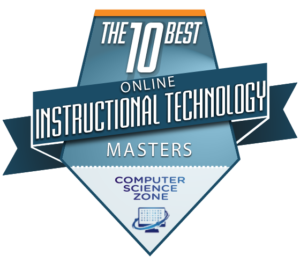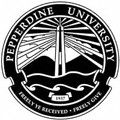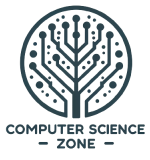 If you’re looking for a sector undergoing a revolutionary tech makeover, look no further than education, where students and teachers are using technology in ways that would’ve been unimaginable a decade ago. On the one hand, this represents a major breakthrough, creating space for personalized learning tools and revamping educational access, affordability, and old-fashioned pedagogies. Still, we’ve seen growing pains: not every student responds to in-class technologies, and not every teacher knows how to use it. If education is going to keep pace with the rest of the world, teachers, administrators, and other officials will need to develop a knowledge base and skill-set to plan, develop, and implement effective instructional technologies.
If you’re looking for a sector undergoing a revolutionary tech makeover, look no further than education, where students and teachers are using technology in ways that would’ve been unimaginable a decade ago. On the one hand, this represents a major breakthrough, creating space for personalized learning tools and revamping educational access, affordability, and old-fashioned pedagogies. Still, we’ve seen growing pains: not every student responds to in-class technologies, and not every teacher knows how to use it. If education is going to keep pace with the rest of the world, teachers, administrators, and other officials will need to develop a knowledge base and skill-set to plan, develop, and implement effective instructional technologies.
Below, we’ve compiled the best online graduate tracks in instructional technology, which include MEd’s, MA’s, and MS degrees, all focused on the intersection of education and tech. While many are designed for K-12 teachers, instructional coordinators, and other education professionals, they’re also helpful for any curriculum and skill-based trainers in business, healthcare, and other large organizations.
Methodology:
- Academic Prestige (1/4): traditional ranking metrics including the percentage of faculty with terminal degrees in their field, admissions standards, and student-faculty ratios.
- Flexibility (1/4): the range of flexibility-enhancing components including asynchronous and synchronous deliver, accelerated courses, generous transfer policies, credit for prior experience among other features.
- Affordability (1/4): the estimated out-of-state tuition per credit hour rate.
- Online Experience (1/4): the percentage of graduate students at the institution who take some online courses as well as retention rates.
1) University of Illinois Urbana-Champaign

The University of Illinois, founded in 1867, is the state’s second oldest university, with 150 undergraduate and 100 graduate and professional programs. It is widely considered one of the top public universities in the country – holding a “public ivy” ranking – and has been recognized by U.S. News, Times Higher Education World University Rankings, Academic Ranking of World Universities, and QS World University Rankings, among others. With an 18:1 student-to-faculty ratio, Illinois combines personalized instruction with collaborative learning to create a dynamic, 21st century research university. More than 40% of classes are under 20 students.
Illinois offers a unique MEd in Learning Design and Leadership with a Technology Specialist track that consists of 32 credits, covering emerging educational technologies and their effect on the classroom environment. Core requirements include Technology & Educational Reform, New Learning, Learning & Human Development with Educational Technologies, Analysis of Advanced Instructional Technologies, Learning with Mobile Technologies, and Learning Technologies. From there, students select 2 electives to customize course work according to areas of professional interest. All courses are delivered synchronously, but students have 24/7 access to course material and group discussion boards for maximum flexibility. Designed for working professionals – in particular, teachers, instructional designers, educational technology analysts, eLearning consultants, and online learning designers and developers.
- Tuition Per Credit: $459
2) University of Florida

The University of Florida, founded in 1853, has a total enrollment over 50,000 with an alumni base over 330,000 from every state and more than 100 countries. As a member of the Association of American Universities, Florida is ranked among the best public universities in the country by US News, Washington Monthly, and Forbes, among others. Further, Kiplinger’s Finance and Fisk Guide to Colleges each ranked UF #3 for affordability; 66% of students graduates with zero debt. With a 21:1 student-to-faculty ratio, the university maintains a collaborative educational community alongside intimate classes, nearly half of which have fewer than 20 students.
Florida offers an online MEd in Curriculum and Instruction with an emphasis in Educational Technology that consists of 36 credits, including Distance Teaching and Learning, Instructional Design, Media Ecologies and Open Education, Issues and Trends in Educational Technology Research, and Blended Learning Environments. From there, students can customize the track through a variety of elective options and must complete a 16-week practicum in Educational Media and Instructional Design. Taking the standard two classes per semester will create a two-year track, but motivated students can develop an accelerated track by taking a heavier load. Transfer credits are offered on an individual basis with an academic advisor. Applicants must submit GRE scores.
- Homepage
- Tuition Per Credit: $690
3) Pepperdine University

Founded in 1937, Pepperdine University is a private Christian school with a total enrollment of about 7,600. US News ranks among the top 50 universities in the country for academics, but also holds high rankings for veterans services and overall value. High school counselors rank Pepperdine 28th. With a 13:1 student-to-faculty ratio, the university balances small, intimate classes with a vibrant and collaborative learning community. Nearly 70% of classes have fewer than 20 students and just 2% have 50. For those interested in financial aid opportunities, half of full-time undergrads receive some form of aid and average percent-met is 75%.
Pepperdine offers an online/hybrid MA in Learning Technologies that consists of 30 units: among them, Experience Distributed Cognition and Learning, Understand Learning with Technology, Analyze Problems and Tools, Apply Technology for Change, Teaching and Learning Relationships with Technology, and Technology Leadership through Service. All courses are designed for maximum flexibility with only three face-to-face meetings, and the accelerated 1-year track allows working professionals to complete the degree as soon as possible. Further, the cohort model supports a peer-to-peer educational platform. Graduates have gone on to careers as technology coordinators, training educators, consultants, and collegiate staff.
- Homepage
- Tuition Per Credit: $499
4) Johns Hopkins University

Founded in 1876, Johns Hopkins has a total enrollment of 23,000. As a founding member of the American Association of Universities, Hopkins is considered one of the top colleges and universities in the world by Princeton Review, Times Higher Education World University Rankings, Forbes, and US News, among other publications. US News also ranks it 20th for overall value, and high school counselors places it 5th. Thanks to the 8:1 student-to-faculty ratio, classes are kept small for individualized instruction and one-on-one learning. Over 70% of classes have fewer than 20 students, and less than 10% have 50. Half of full-time undergrads receive full financial aid.
Hopkins’s online MS in Education includes a concentration in Technology for Educators that totals 36 credits. In addition to core requirements, students take courses in Culturally Responsive Teaching, Instructional Design for Online Learning, Technology and the Science of Learning, Emerging Issues for Instructional Technology, Technology Leadership for School Improvement, and Designing and Delivering E-Learning Environments, among others. All courses are grounded in project-based learning and align according to standards set by the International Society for Technology in Education (ISTE). Students will also gain a broad understanding of practical issues beyond the classroom from experienced faculty, including studies in policy, practice, research, and legislation.
- Homepage
- Tuition Per Credit: $840
5) University of Missouri

Founded in 1839, The University of Missouri was the first public university west of the Mississippi River. Today, there are satellite campuses in Rolla, Kansas City, and St. Louis, with a total enrollment of 34,000 from 50 states and 120 countries. The alumni network is extensive, with over 300,000 graduates worldwide. Classified as an R1 by the Carnegie Foundation, Missouri is considered one of the top public schools in the country and is a member of the Association of American Universities. Mizzou’s 20:1 student-to-faculty ratio combines the collaborative atmosphere of a large research university with the relative intimacy of a smaller liberal arts school: 40% of classes have less than 20 students and just 17% have 50.
Missouri’s online MEd in Information Science and Learning Technologies includes an emphasis in Technology in Schools that requires 30 credits. Designed for K-12 teachers and instructional coordinators, core courses cover Electronic Portfolio Development, Technology Action Research, Technology to Enhance Learning, and Instructional Systems Design. From there, students customize the track through 18 elective credits, plus a culminating web-based portfolio to demonstrate mastery of material and practical application of concepts. All courses are built for maximum flexibility to accommodate working professionals’ schedules, and accelerated delivery modules help students complete their degrees in as little as one year. As an added benefit, all UM distance learners pay in-state tuition.
- Homepage
- Tuition Per Credit: $416
6) Appalachian State University

Appalachian State University, founded in 1899, is one of the top public schools in the region (third according to US News) and ranks among the best for veterans, especially. With a total enrollment of 18,000, App State’s 16:1 student-to-faculty ratio represents a university that boasts the resources of large research university alongside the small, intimate classroom experience of a smaller liberal arts school. A third of classes have fewer than 20 students and just 8% have 50. Further, as a sign of student success and satisfaction, the freshman retention rate is over 85%. Half of undergrads receive some form of financial aid, and the average need met is 75%.
Appalachian State’s part-time online master’s in Educational Media features three potential concentration tracks – Instructional Technology Specialist/K-12, Online Learning and Professional Development, and New Media Literacies and Global Perspectives – for maximum curricular flexibility and customization. Further, with synchronous and asynchronous classes available, students have the opportunity to take simulated live courses and anytime-anywhere courses to accommodate a variety of learning styles and individual schedules. Of the 36 credit curriculum, core requirements are New Media and Emerging Literacies, Utilizing Networking and Communications Technologies for Learning, Digital Learning Environments in a Changing Society, Research Methods, Applications of Digital Technologies, and Instructional Design or Designing Instruction for Digital-Age Learners. In addition to K-12 and higher education career options, graduates will be prepared for roles in business, health care, and nonprofit organizations.
- Homepage
- Tuition Per Credit: $266
7) University of Georgia

The University of Georgia, founded in 1785, was the first public, state-supported college in the country. Today, enrollment stands at 36,000, and US News ranks UGA among the best universities in the nation, with additional high marks for veteran services and by high school counselors. Georgia’s 18:1 student-to-faculty is an exceptional number for a school of its size, and over 40% of classes have fewer than 20 students (just 12% have 50). Further, UGA is a national leader among public universities for major scholarship earners, including 23 Rhodes Scholarships, 51 Goldwater Scholarships, 20 Truman Scholarships, 14 Udall Scholarships, 36 Boren Scholarships and 7 Marshall Scholarships. As an indicator of student satisfaction, the university’s freshman retention rate for undergraduates is 94%.
UGA’s online MEd in Learning, Design and Technology, Instructional Design and Development consists of 36 credits: Instructional Technology, Emerging Approaches to Teaching, Learning & Technology, Digital Video in Education, Management of Instructional Projects, Research Methods in Instructional Technology, Evaluation and Assessment, and Designing and Teaching Online Courses. From there, all students must complete a “Design Studio” module, with studies in Design and Development Tools and Learning Environments Design. The cohort model promotes a vibrant and collaborative learning atmosphere, and all courses are designed for maximum flexibility. Average degree completion time follows a standard two-year track. Though the program is 100% online, many students choose to attend an annual program conference.
- Homepage
- Tuition Per Credit: $638
8) George Washington University

Founded in 1821, George Washington University has a total enrollment of about 26,000, representing all 50 states and 130 countries. One of the best universities in the country, GW has been highly ranked by the Princeton Review, Forbes, U.S. News, Washington Monthly, and other major publications. The Carnegie Foundation has also ranked the university as an R1, and GW is regarded as one of the most politically active schools in the country, according to the Princeton Review. US News highlights GW’s overall value and military friendliness. With a 13:1 student-to-faculty ratio, classes are kept intimate and personal to promote individualized instruction and peer-to-peer learning. Over half of classes have fewer than 20 students.
George Washington offers an online MA in Education and Human Development in Educational Technology Leadership that totals 36 credit hours. Core requirements include Leadership and Education, Education Policy, Applying Educational Media and Technology, Educational Hardware Systems, Developing Multimedia Materials, and Instructional Design. From there, students customize the curriculum through a range of ed tech electives. The program also offers a half-dozen practical online certificates in areas like Training and Educational Technology, Integrating Technology into Education, and E-Learning. All courses are designed for maximum flexibility and practical application by experienced professionals in the field. Graduates will be prepared for roles like curriculum developer, instructional technology supervisor, instructional designer, and educational technology specialist.
- Homepage
- Tuition Per Credit: $850
9) Kent State University

Founded in 1910, Kent State University is a public research university in Kent, Ohio, with additional campuses in New York, China, Italy, Switzerland and India. The university also has an expanding online education platform, with more than 30 undergraduate, graduate, and certificate programs available from a wide range of disciplines. The Carnegie Foundation ranks KSU among the top 80 public research universities in the country, and US News ranks it among the Tier 1 100 best colleges and universities. Further, as one of the largest higher education schools in Ohio, with a total enrollment of 30,000 Kent State boasts an alumni network of over 210,000 from all 50 states and more than 100 countries. The 21:1 student-to-faculty ratio supports a dynamic, collaborative learning experience, and classes are generally kept small: over half have fewer than 20 students and just 9% have 50.
Kent State’s online master’s in Instructional Technology is a 34-credit program, including core requirements in Learning Theories, Designing Visuals for Instruction, Computer Applications in Education, Researching Current Issues in Instructional Technology, and Instructional Applications of the Internet, among others. Students then customize the track through a variety of elective options, plus practicum and portfolio course work to gain real-world experience. In particular, KSU’s program is designed for working teachers looking to gain a better understanding of emerging educational technologies and effective implementation strategies. Students interested in corporate training, multimedia production, web development, and tech administration will also find the degree useful. Applicants should submit GRE/GMAT scores and have earned at least a 3.0 undergraduate GPA.
- Homepage
- Tuition Per Credit: $382
10) Purdue University

Founded in 1869, Purdue has a total enrollment of 40,000, making it the second-largest school in the state. (It also has the fourth largest international student population in the country). The Princeton Review has ranked Purdue’s alumni network of 450,000 11th in the country, and the Wall Street Journal ranks Purdue 4th for preparing students for the workforce. It has also been recognized for affordability, value, and earning potential. Considering its size, Purdue’s 12:1 student-to-faculty is exceptional, balancing the resources of a large research university with the dynamic, intimate classes of a smaller liberal arts school. 40% of classes have fewer than 20 students, and less than 18% have 50 or more. As an indicator of satisfaction, the university’s freshman retention rate is 92%.
Purdue’s online MSEd in Learning Design and Technology consists of 33 credits, including Learning Theories and Instructional Design, Strategic Assessment and Evaluation, Introduction to E-Learning, Advanced Practices in Learning Systems Design, and several practicum experiences and portfolio sessions to gain practical, real-world experience. Students also complete a range of electives to customize the course work according to areas of professional interest. For those interested in earning credentials during the program, the program’s unique badge program allows students to emphasize a specific proficiency in LDT. All classes are designed for maximum flexibility to accommodate working professionals, courses deliver asynchronously, and material is available online 24/7. Further, students have access to group discussion boards, live chat rooms, and more. The degree is accredited by the the National Council for Accreditation of Teacher Education (NCATE). Applicants must submit GRE scores.
- Homepage
- Tuition Per Credit: $650
